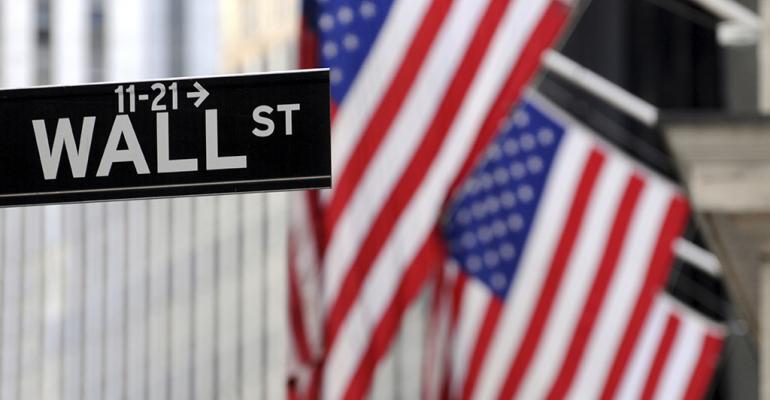By Oliver Renick
(Bloomberg) --Stock-pickers are excited about their opportunities under a Donald Trump presidency. But just a week after the U.S. election, their top choices may be stalling out.
Wall Street analysts say financial and industrial groups, the two parts of the stock market that have rallied the most since the vote, are running out of steam. The average financial stock is at or above analysts’ 12-month target price, and the average industrial company is just 2.4 percent below it, implying the least amount of upside since 2009.
What’s more, the two groups are facing a bad profit slump. They’re expected to post contractions in annual earnings of more than 3 percent for 2016, worse than every other sector in the market other than materials and energy. While their income is expected to rebound next year, revenues are estimated to lag the rest of the market.
“The industrial and financial stocks are a little bit ahead of themselves,” said Carin Pai, director of equity management at Fiduciary Trust Company International in New York. “I would be a little bit cautious on some of the sectors that have really moved in anticipation of growth because the fundamentals need to catch up to that.”
Investors have piled into the two groups since the election on speculation Trump will loosen Wall Street regulations and follow through on pledges to spend more on infrastructure. Yet the fundamental backdrop for the two is far from rosy.
For financial companies, annual profits will be 3.6 percent lower in 2016 than a year ago. For industrial shares, the figure is 5.6 percent, according to data compiled by Bloomberg three days after Trump’s win. They’ll rebound by 9.3 percent and 5 percent in 2017, respectively, compared with 12 percent in the S&P 500, according to analyst estimates.
Of course, those projections may change as the Trump administration moves forward with its plans.
Regardless, the growth won’t be driven by booming sales -- revenues are expected to rise 3.4 percent for financial companies, and industrial sales are seen gaining only 2.2 percent in 2017, compared with a 6.3 percent jump for the overall benchmark gauge, the data show.
Financial shares are up 9.3 percent after a seven-session rally that ended Wednesday. And since the election investors have added $4.8 billion to the Financial Select Sector SPDR Fund, the biggest exchange-traded fund tracking the group.
The rush into industrial companies looks very much the same. The group is up 4.8 percent since the vote, and the Industrial Select Sector SPDR Fund saw an influx of $1.9 billion, including $800 million added on Nov. 11, the biggest single day of inflows in the product’s history.
The rally in the groups may be short-lived if Wall Street strategists are correct. Financial companies are now trading roughly in line with analysts 12-month target prices, data compiled by Bloomberg show. For industrials, they’re just 2.9 percent below that level, the smallest amount since 2009, according to Bloomberg data.
To contact the reporter on this story: Oliver Renick in New York at [email protected] To contact the editors responsible for this story: Jeremy Herron at [email protected] Eric J. Weiner





